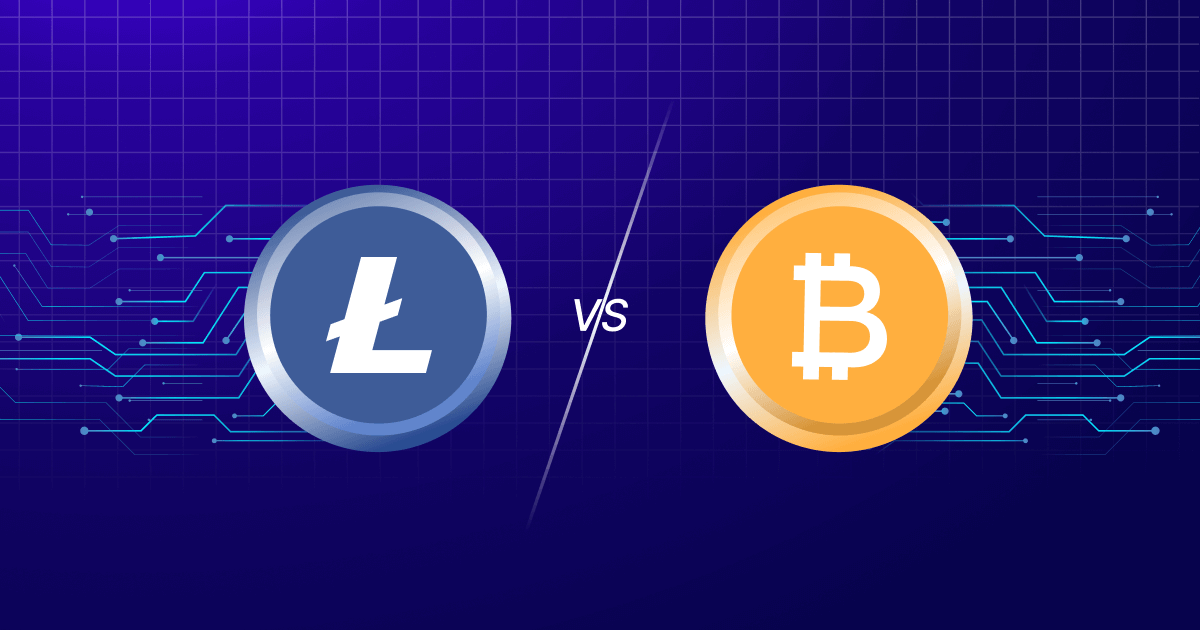
Litecoin and Bitcoin are two prominent cryptocurrencies that have made a significant impact in the digital currency landscape. While both cryptocurrencies share some similarities, they also possess key differences that set them apart. Understanding these differences is crucial for investors, traders, and enthusiasts seeking to navigate the world of cryptocurrencies. In this article, we will explore the fundamental variances between Litecoin and Bitcoin, including their underlying technologies, transaction speeds, supply limits, and overall objectives. By delving into these distinctions, we can gain a deeper understanding of the unique features and characteristics that make Litecoin and Bitcoin distinct entities within the cryptocurrency ecosystem.
What is Bitcoin?
Bitcoin is a decentralized digital currency and the first cryptocurrency to gain widespread recognition and adoption. It was introduced in 2009 by an anonymous person or group of people using the pseudonym Satoshi Nakamoto. Bitcoin operates on a peer-to-peer network, allowing users to send and receive transactions directly without the need for intermediaries like banks.
At its core, Bitcoin utilizes blockchain technology, a decentralized and transparent ledger that records all transactions made with the currency. This ledger is maintained by a network of computers, known as miners, who validate and verify transactions by solving complex mathematical problems. Through this process, new bitcoins are created and added to circulation.
One of the key features of Bitcoin is its limited supply. There will only ever be 21 million bitcoins in existence, making it a deflationary asset. This scarcity contributes to its perceived value and acts as a safeguard against inflation.
Bitcoin is known for its pseudonymous nature, as transactions are identified by wallet addresses rather than personal information. This provides a level of privacy and security, although it is not entirely anonymous. Bitcoin transactions are recorded on the public blockchain, which can be viewed by anyone.
As a decentralized currency, Bitcoin is not controlled or regulated by any central authority or government. This makes it resistant to censorship and enables individuals to have full control over their funds. It has gained popularity as a means of transferring value globally, especially in areas with limited access to traditional banking services.
Bitcoin has also become a popular investment asset and is traded on various cryptocurrency exchanges. Its price has experienced significant volatility throughout its history, attracting both investors seeking potential returns and individuals interested in its disruptive potential.
What is Litecoin?
Litecoin is a decentralized cryptocurrency that was created in 2011 by Charlie Lee, a former Google engineer. It was designed as a peer-to-peer digital currency, similar to Bitcoin, with the goal of improving upon certain aspects of Bitcoin’s technology. As one of the earliest altcoins, Litecoin is often referred to as the “silver to Bitcoin’s gold.”
One of the main differences between Litecoin and Bitcoin is the hashing algorithm used. While Bitcoin uses the SHA-256 algorithm, Litecoin utilizes Scrypt. This algorithm change allows Litecoin to have faster block generation times and quicker transaction confirmations. In fact, Litecoin’s block time is approximately 2.5 minutes compared to Bitcoin’s 10 minutes, which results in faster transaction speeds and improved scalability.
Another distinguishing feature of Litecoin is its larger maximum supply. While Bitcoin has a limited supply of 21 million coins, Litecoin has a maximum supply of 84 million coins. This higher supply limit contributes to Litecoin’s affordability and availability compared to Bitcoin.
Litecoin also aims to be more accessible and user-friendly. The Litecoin network is designed to handle a higher transaction volume, which makes it suitable for day-to-day transactions and payment processing. Additionally, Litecoin often implements technological advancements and features ahead of Bitcoin, such as the adoption of the Segregated Witness (SegWit) upgrade, which increases the efficiency of transactions.
Due to its similarities with Bitcoin and its technological advancements, Litecoin has gained significant recognition and has become one of the most popular cryptocurrencies. It is actively traded on various cryptocurrency exchanges and is widely accepted by merchants and online platforms.
Litecoin vs Bitcoin: Key Differences
Technology and Architecture:
Bitcoin: Bitcoin operates on a blockchain using the SHA-256 hashing algorithm. It focuses on being a decentralized digital currency and a store of value.
Litecoin: Litecoin also operates on a blockchain but uses the Scrypt hashing algorithm. It aims to be a faster and more accessible digital currency for everyday transactions.
Transaction Confirmation and Speed:
Bitcoin: Bitcoin has an average block time of around 10 minutes, which means it takes approximately 10 minutes for transactions to be confirmed and added to the blockchain.
Litecoin: Litecoin has a shorter block time of about 2.5 minutes, resulting in faster transaction confirmation and quicker overall transaction speed.
Scalability:
Bitcoin: Bitcoin has faced challenges with scalability due to its larger block size and increasing transaction volume. This has led to issues like higher fees and longer confirmation times during periods of high network activity.
Litecoin: Litecoin’s shorter block time and more frequent block generation provide improved scalability compared to Bitcoin. It can handle a higher transaction volume and offers lower fees.
Market Capitalization and Adoption:
Bitcoin: Bitcoin has a significantly higher market capitalization and wider adoption compared to Litecoin. It is the most recognized and widely accepted cryptocurrency, with substantial institutional investment and global recognition.
Litecoin: While Litecoin has gained its own following and is actively traded on cryptocurrency exchanges, its market capitalization and adoption are lower than Bitcoin’s. However, it still maintains a strong community and has been adopted by various merchants and payment processors.
Consensus Algorithm:
Bitcoin: Bitcoin uses a Proof of Work (PoW) consensus algorithm, where miners compete to solve complex mathematical problems to validate transactions and secure the network.
Litecoin: Litecoin also utilizes a Proof of Work consensus algorithm, but it uses the Scrypt hashing algorithm instead of Bitcoin’s SHA-256. This algorithm change allows for faster block generation and transaction confirmation.
Conclusion
In conclusion, Litecoin and Bitcoin are both influential cryptocurrencies with their own set of unique attributes. Bitcoin, as the pioneering cryptocurrency, holds the status of being the most recognized and valuable digital asset. Its emphasis on decentralization and limited supply has contributed to its store-of-value narrative. On the other hand, Litecoin, often referred to as the “silver to Bitcoin’s gold,” differentiates itself through faster transaction speeds, lower fees, and a more abundant supply. While Bitcoin remains the dominant force in the cryptocurrency market, Litecoin has found its niche as a more efficient and accessible payment option. By examining the distinctions between Litecoin and Bitcoin, investors and enthusiasts can make informed decisions based on their specific objectives and requirements within the dynamic and evolving world of cryptocurrencies.
FAQs
1. What is the main difference between Litecoin and Bitcoin?
The main difference between Litecoin and Bitcoin lies in their underlying technologies. While both cryptocurrencies are based on blockchain technology, Litecoin utilizes a different hashing algorithm called Scrypt, compared to Bitcoin’s SHA-256 algorithm. This difference in hashing algorithms affects the mining process, transaction validation, and overall network consensus. Additionally, Litecoin has a larger maximum supply of 84 million coins, whereas Bitcoin has a limited supply of 21 million coins, which has implications for scarcity and inflation.
2. Which cryptocurrency has higher transaction speed: Litecoin or Bitcoin?
Litecoin has a higher transaction speed compared to Bitcoin. Litecoin’s block generation time is approximately 2.5 minutes, while Bitcoin’s block time is around 10 minutes. This means that transactions on the Litecoin network can be confirmed and settled more quickly than on the Bitcoin network. The faster block generation time of Litecoin allows for a higher throughput and smoother transaction experience, making it more suitable for day-to-day transactions and payment processing.
3. Can Litecoin and Bitcoin be used interchangeably?
Litecoin and Bitcoin are separate cryptocurrencies and cannot be used interchangeably. While they share similarities, such as being decentralized digital currencies, they have distinct networks, protocols, and community ecosystems. Each cryptocurrency has its own blockchain, and transactions are specific to the respective network. Litecoin cannot be directly used as a substitute for Bitcoin or vice versa. However, both cryptocurrencies can be exchanged or traded on various cryptocurrency exchanges, allowing users to convert one cryptocurrency into another based on market availability and liquidity.





